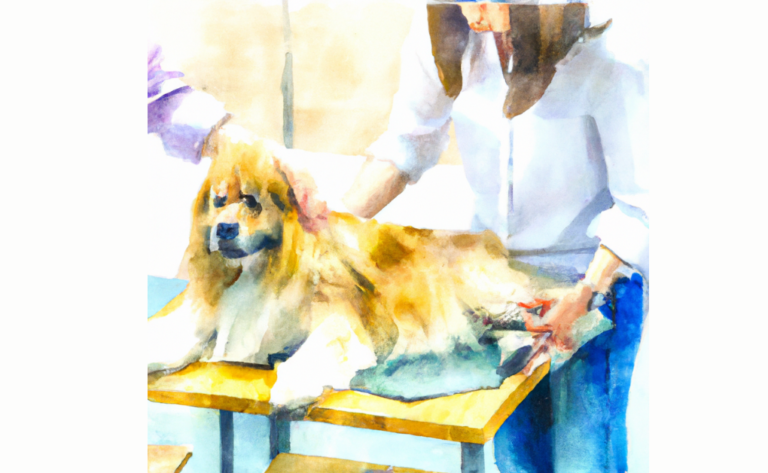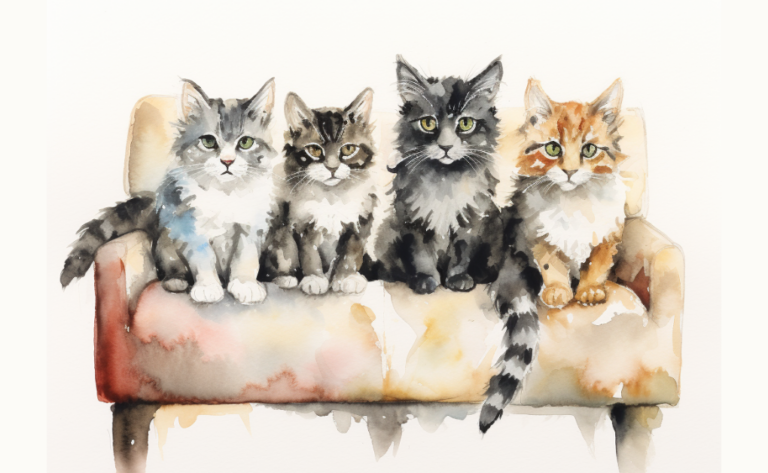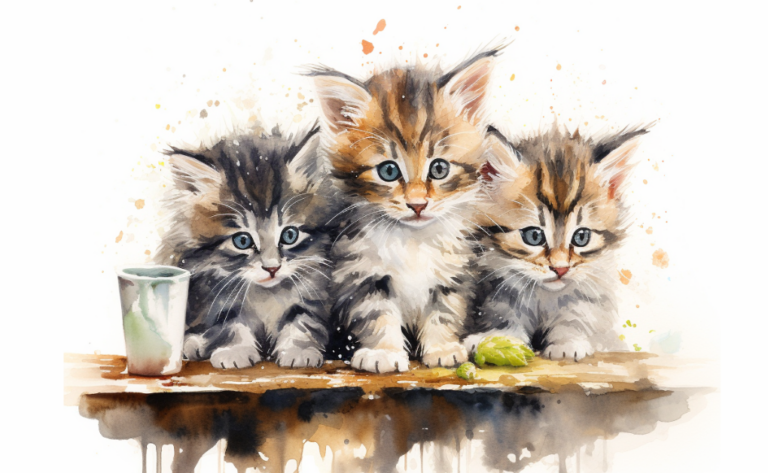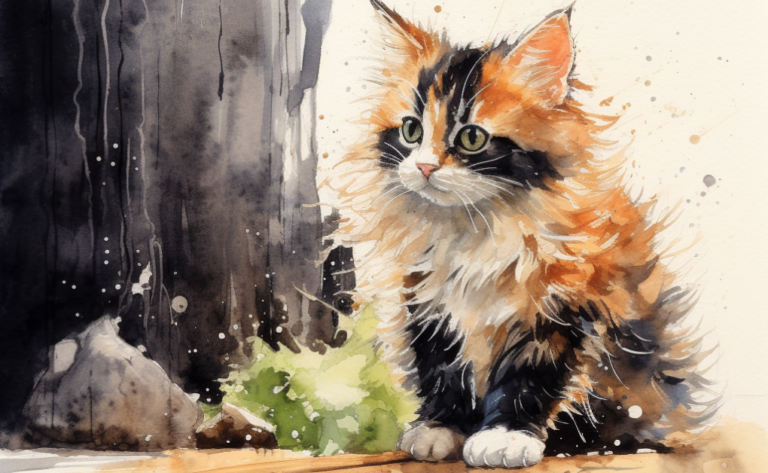7 Causes of Cat Sneezing
Introduction
It was a quiet Sunday afternoon when Sarah noticed her beloved cat, Mr. Whiskers, starting to sneeze repeatedly. At first, she thought it was just a one-time occurrence, but as the sneezing persisted, her concern grew. Determined to uncover the mystery behind Mr. Whiskers’ sudden sneezing fits, Sarah embarked on a quest for answers.
Cats sneeze when they’re sick, stressed, or excited. They sneeze because they have no control over their body temperature and need to cool down. When cats sneeze, they expel air through their nose and mouth at the same time. The result is a loud noise that sounds like a hissing sound.
If your cat sneezes too often, she could also have a sinus problem called “sinusitis.” A sinus infection occurs when bacteria build up on one or both sides of her nose. Sinuses drain mucous out of the body through small openings called Ostia. Bacteria usually keep the Ostia open, allowing mucous to flow out naturally. But sometimes, the sinuses become blocked, trapping mucous inside. This causes pain and pressure in the head, face, and ears.
Cats can also catch colds, just like people do. In addition, they can spread feline herpesvirus (FHV), calicivirus, coronavirus, parainfluenza virus, and rhinovirus. According to certain studies, up to 80-90% of cats are infected with the herpesvirus. These viruses cause symptoms similar to those seen in humans. As a result, some cats develop upper respiratory tract infections (URTI). Symptoms include nasal discharge, sneezing, fever, lethargy, loss of appetite, and lack of energy.
Your veterinarian can diagnose your cat’s health problems and prescribe medications to help treat them. They can also recommend ways to prevent future problems. For example, you can give your cat a daily dose of probiotics to reduce inflammation and improve digestion. You can also try giving your cat homeopathic remedies to relieve discomfort.
Here are the most common causes of cat sneezing to help you understand why your kitty might be sneezing more than usual:
Viral Respiratory Infections
A sneeze is one of the most common ways we transmit infectious diseases. Viral upper respiratory infections (URIs), including rhinitis, pharyngotonsillitis, sinusitis, otitis media, laryngitis, tracheitis, bronchiolitis, and croup, are caused by viruses. These viruses are spread via droplets produced during coughing, sneezing, talking, singing, laughing, crying, kissing, hugging, sharing, eating utensils, etc.
Many different types of viruses cause URIs. Some of the most common include parainfluenza virus, influenza virus, adenovirus, coronaviruses, enteroviruses, metapneumovirus, respiratory syncytial virus, and rhinovirus.
Cats are susceptible to URI viruses just like humans. They can become infected directly from another cat or contact with contaminated objects such as toys, food bowls, litter boxes, grooming tools, clothing, bedding, furniture, carpeting, etc.
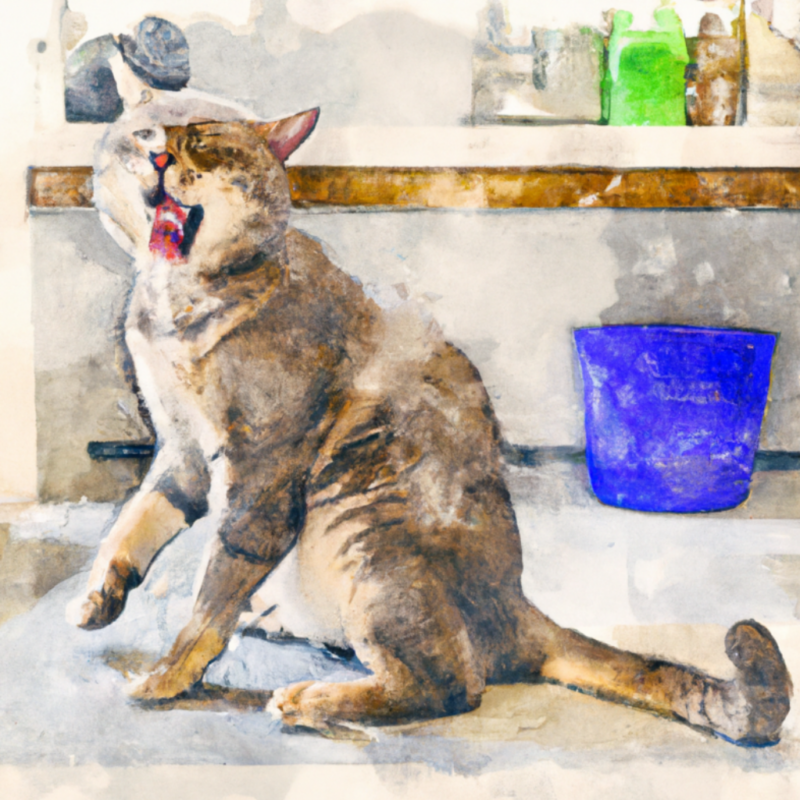
If you suspect your cat has URI, take them to the veterinarian immediately. Your vet will perform a physical examination, blood test, and culture tests to determine whether your cat has URI. If your cat does have URI, it will receive supportive care and medications. In addition, your cat will probably require antibiotics to prevent secondary bacterial infections.
Bacterial Infections
Your cat could suffer from bacterial infections if it has a runnier nose and eye discharge. These include upper respiratory tract infections (URTI), lower respiratory tract infections (LRTI), otitis externa, conjunctivitis, and sinusitis.
Antibiotics should always be administered under veterinary supervision. They should never be used as a substitute for proper medical care. If you suspect your cat might have a bacterial infection, consult your vet immediately.
There are many causes of nasal discharge in cats, including viral and allergic conditions. However, some common reasons are listed here:
Viral Conditions:
- Feline herpesvirus 1 (FHV1): This virus infects the mucous membranes of the mouth, eyes, nose, and genitals. Symptoms include fever, coughing, sneezing, swollen glands, loss of appetite, lethargy, and sometimes diarrhea. FHV1 usually lasts about three weeks.
- Coccidiosis: This parasite infests the intestines of puppies and kittens. Symptoms include diarrhea, weight loss, poor hair coat, lack of energy, and dehydration. Treatment includes medication and supportive care.
Allergies
Cats sneeze because they’re allergic to certain things. The most common allergens include dust, pollen, mold spores, dander, feathers, fur, saliva, food, and tree nuts.
If your cat is frequently sneezing, there may be an allergy problem. Your veterinarian can help diagnose the cause of your cat’s allergies.
Some cats are born with allergies; others develop them later in life. If your cat develops allergies after exposure to these allergens, he should avoid contact with those substances until his allergies disappear.
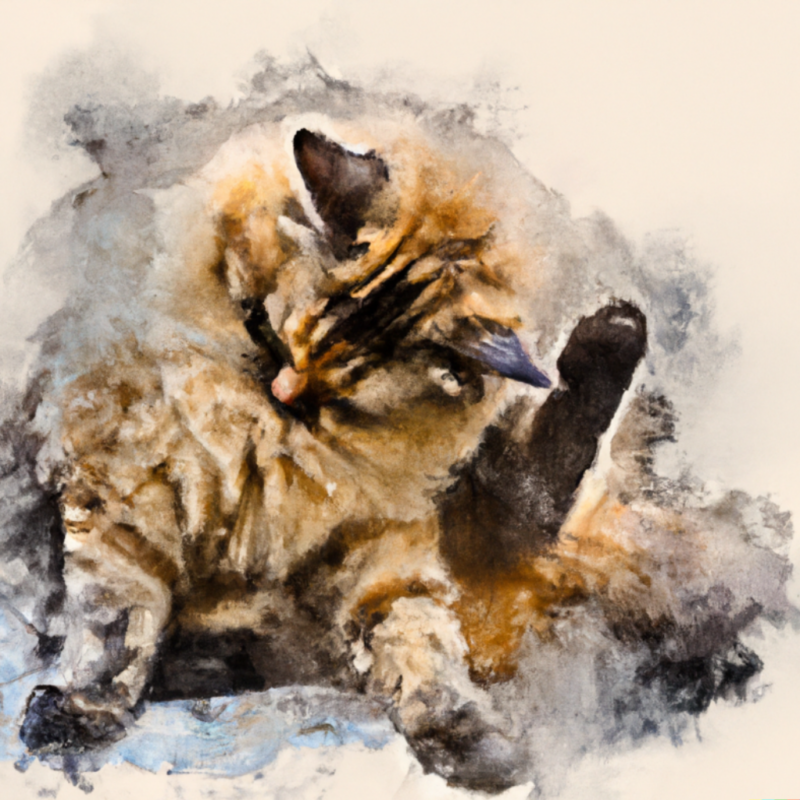
Your vet can prescribe medications to treat your cat’s flea allergies. For example, he may recommend daily doses of antihistamines, corticosteroids, antibiotics, or other drugs.
If your cat has been diagnosed with allergies, you can take steps to prevent future problems. Keep your home clean and free of pet hair and dander. Clean carpets regularly and vacuum them often. Avoid exposing your cat to allergens.
Keep your cat indoors during springtime when pollinating insects are active. Use a HEPA filter air purifier to remove airborne particles from the air.
Inflammation and Irritation
Sneezing is often caused due to inflammation and irritation. This can occur because of allergies, sinusitis, viral infections, post-nasal drip, and many other conditions. Most people know that steroids and antihistamines are used to treat sneezing. However, there are some natural remedies you can try to help relieve symptoms.
“Immunotherapy”
Immunotherapy is one of the most promising treatments for allergic rhinitis. In addition to treating allergy symptoms, immunotherapy also helps prevent future episodes. Immunotherapy involves injecting tiny amounts of allergens into the body over several weeks to months. These injections train the immune system to recognize and attack specific allergens. This process is called desensitization. Then, after several months, patients receive maintenance doses of allergen to protect their bodies against future attacks.
Foreign Material
A cat’s nose is one of the most sensitive parts of its body. Cats can detect smells that humans cannot and use their sense of smell to help navigate their environment. They rely on their sense of smell to find food, avoid danger, and even communicate with each other. Foreign bodies can irritate a cat’s nostril and cause them to sneeze.
Cats sneeze when they inhale foreign material through their nose. This causes them to cough, hack, and spray nasal discharge.
Allergies cause sneezing because the body produces histamines when exposed to allergens such as dust, dander, pollen, mold spores, pet hair, feathers, and fur. Histamines trigger the release of mucus from the lining of the respiratory tract. The mucus helps protect the lungs against infection.
When a cat suffers from allergies, its immune system overreacts to these triggers. As a result, his body releases large amounts of histamines, causing him to sneeze.
If you suspect your cat may be allergic to certain substances, ask your veterinarian to test her for allergy symptoms. Your vet can also recommend medications that reduce inflammation and help relieve sneezing.
Dental Disease
Cats who suffer from the dental disease usually have nasal issues because it irritates the lining of the nose and sinuses. This leads to inflammation and congestion, causing cats to sneeze. According to the study, Cornell Feline Health Center research shows that over 50% of cats older than four years have some dental problem. Sneezing is essential to the body’s immune system, helping to clear out foreign particles such as dust, pollen, mold spores, and bacteria.
This condition usually occurs in older cats and is characterized by swelling and irritation of the gums. The cause is unknown, but some believe it may be due to allergies or parasites.
There are several ways to treat tooth decay and gum disease, including medication, surgical procedures, and laser treatments.
Neoplasia (Tumors)
A tumor is a mass of abnormal cells growing out of control. These masses of tissue are called neoplasms. Neoplastic growths are classified into benign and malignant. Benign tumors grow slowly and do not invade surrounding tissues. Malignant tumors increase and tend to spread throughout the body.
Cats with tumors are most commonly seen in middle age. The most common type of mass cell tumor found in cats is lymphoma.
Lymphomas usually develop in the thymus gland located behind the lungs. This gland produces white blood cells (lymphocytes) that help fight infection. Neoplasms can occur when these lymphocytes multiply uncontrollably.
When this happens, the lymphocyte population becomes too large and begins to crowd out normal tissue. Eventually, the body stops producing healthy lymphocytes and instead starts making abnormal ones. These lymphocytes begin to reproduce uncontrolled, causing the lymph node to swell.
Eventually, the swollen lymph nodes form lumps that may appear anywhere in the body. Cats with lymphoma may experience coughing, weight loss, lethargy, fever, difficulty breathing, vomiting, diarrhea, lack of appetite, or decreased activity.
Cats with lymphoma may also exhibit signs of nasal discharge, sneezing, and excessive salivation.
Fungal Infections
Fungi are microscopic organisms that live everywhere on Earth. They’re found in soil, water, plants, animals, and humans. Some fungi are beneficial and help us grow food, while others harm us.
One type of fungus called mold causes cats to sneeze. Mold spores float through the air and land on surfaces where they germinate (grow) and multiply. The resulting mold proliferates and produces tiny particles known as allergens. These allergens irritate the lining of the cat’s nose and throat, causing inflammation and coughing.
Mold allergies are common in homes with carpets, furniture, drapes, and wallpaper. But they can be found anywhere there’s moisture. So keep your home clean and dry to prevent mold growth.
If your cat suffers from allergic rhinitis, ask your veterinarian about antihistamines and corticosteroids. Both medications reduce the mucus produced by the nasal passages and decrease swelling.
Is Cat Sneezing Serious?
Cats are known to sneeze up to 20 times per day. But what happens when it gets out of hand? Unfortunately, a few cats sneeze too much, causing excessive and hard-to-breathe coughs that can lead to pneumonia. If you notice your cat snorting and coughing excessively, take them to the vet immediately.
What If My Cat Keeps Sneezing?
Chronic intermittent sneezing is common in cats. It happens often enough that most veterinarians don’t even bother asking about it. But there are some cases where you should take notice.
A single episode of sneezing is usually nothing to worry about. Most people think of sneezing as a reflexive action, like coughing or yawning. But sneezing isn’t always a simple matter of clearing one’s nose. Sometimes it’s a sign of something more serious.
Here are some things to consider if your cat keeps sneezing:
- Is he getting sick?
Cats can catch colds, allergies, and upper respiratory infections. These conditions cause nasal discharge, congestion, runny eyes, and sneezing. In addition, some animals develop secondary bacterial infections such as sinusitis or otitis media, leading to ear pain, fever, lethargy, and loss of appetite.
Call your veterinarian immediately if your pet seems to be having trouble breathing, is wheezing or gasping, or has difficulty swallowing or drinking water.
- Are his ears hurting?
Your cat may have an earache, which could be due to wax buildup, foreign bodies, or inflammation. Earaches can also indicate problems with the eardrum, inner ear, or middle ear.
See your vet immediately if your cat has any of these symptoms.
- Does he seem depressed?
Some cats get sad or anxious when they’re ill. They may refuse to eat or drink, become listless, or lose interest in play. This behavior is typical for pets who feel inadequate. It’s essential to watch for signs of depression because it can signal illness.
- Has he lost weight?
If your cat doesn’t eat or drink, he may be losing weight. He may also appear dull and withdrawn. Cats who aren’t eating well should be checked by a veterinary professional.
- Is he acting aggressively?
Aggression is another symptom of illness. For example, your cat may lash out at other animals or humans. Or he may show aggression toward himself, biting his paws or scratching himself.
When to See a Vet?
It’s never too early to seek help for your cat. Contact your local animal hospital or emergency clinic immediately if your pet shows illness. You’ll need to bring your cat in so a doctor can examine him and rule out medical issues. The sooner you act on your cat’s symptoms, the better your chance of saving his life.
Here are a few common symptoms that might require veterinary care.
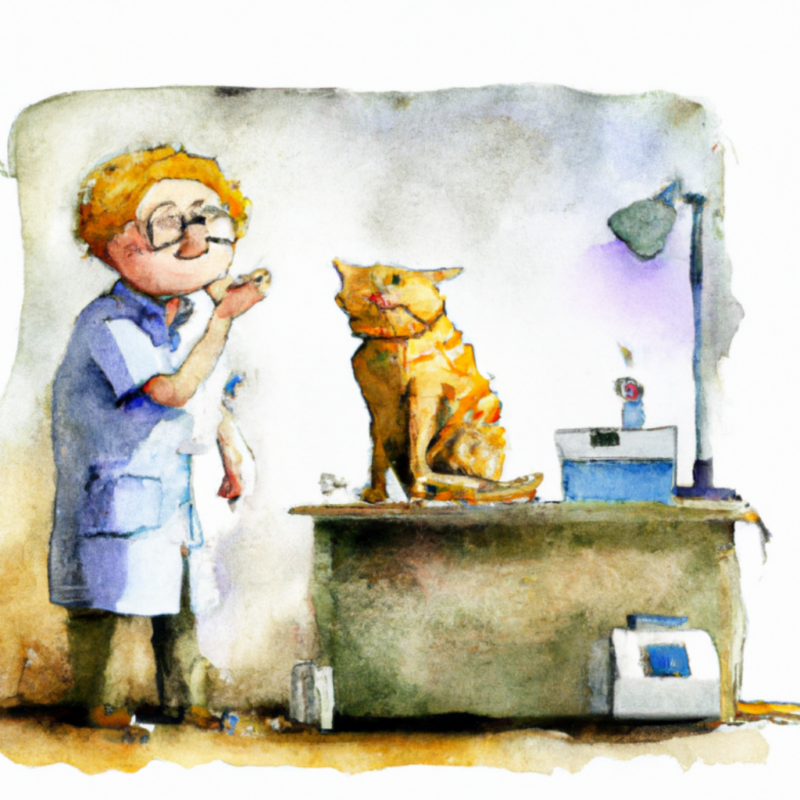
- Weight Loss
If your cat seems to be losing weight, especially in his abdomen, it could be due to several health issues. Cats tend to lose weight because they eat less food than dogs. So, if your cat suddenly stops eating, it could be a symptom of a severe problem such as kidney disease, pancreatitis, diabetes, cancer, liver problems, or thyroid disorders.
- Nasal Discharge
A runny nose is one of the most common complaints among cats, but it doesn’t always signal a serious issue. For example, a clear nasal discharge could be caused by allergies, but if it persists longer than three days, it could signify a sinus infection. Other causes include upper respiratory infections, chronic ear infections, tumors, and even foreign bodies lodged inside the nose.
- Lethargy
Your cat may seem sluggish and tired, but he could be suffering from dehydration. This happens when your pet loses too much water through urination or sweating. Your cat may also be experiencing heat exhaustion. Heat exhaustion occurs when your body temperature rises above 102 degrees Fahrenheit.
Symptoms include weakness, lack of energy, lethargy, vomiting, diarrhea, excessive thirst, increased breathing rates, rapid pulse, and muscle cramps.
Diagnosing Sneeze in Felines
Vet visits are essential for many reasons, including diagnosing illnesses and treating injuries. But some conditions require further testing. One such state is sneezing. Cats often sneeze because they have nasal congestion, which causes fluid buildup in the sinuses. This can lead to coughing and excessive drooling. A common cause of nasal congestion in cats is an upper respiratory virus called URI.
URI symptoms include a runny nose, watery eyes, and fever. These symptoms can occur together or one at a time. If you notice any of these symptoms in your cat, it’s best to take him to the vet immediately. However, you don’t want to wait too long since the longer he stays, the worse his symptoms become.
The most effective way to diagnose URI is by examining your cat’s nose. Looking closely, you might notice a discharge coming out of the nostrils. In addition, your vet will likely ask about your cat’s history. For example, he’ll want to know whether your cat has been sick recently, how much he ate, what medications he takes, and anything else that could contribute to his current health status.
Once your vet determines the cause of your cat’s sneezing, he’ll perform additional tests. Depending on the severity of his symptoms, your vet may recommend blood work, radiographs, or even surgery. However, the vet may prescribe medication for treatment if your cat has mild symptoms.
If your cat has URI, the main goal is to relieve his discomfort. However, treatment options vary depending on the type of infection. For example, antibiotics treat bacterial infections, while antihistamines help reduce allergic reactions.
Physical Exam
A healthy cat needs regular check-ups. Your veterinarian will examine your cat’s eyes, ears, teeth, mouth, nose, skin, heart, lungs, abdomen, lymph nodes, urinary tract, reproductive organs, spinal cord, and neurological system. This is called a “routine physical exam.” Contact your vet immediately if you notice anything unusual about your cats, such as coughing, vomiting, diarrhea, lethargy, weight loss, excessive scratching or licking, or difficulty breathing.
If your cat is old enough, it may receive vaccinations against feline leukemia, rabies, distemper, panleukopenia, hepatitis, and parvovirus. These are called “core vaccines” because they cover most diseases common to felines. Cats over 12 months old should also receive a fecal test for parasites and a blood panel, including a complete blood count (CBC), serum biochemistry profile, and urinalysis.
Your vet might recommend additional tests depending on how well your cat looks and acts. For example, kittens may need testing for FeLV and FIV antibodies, while older cats may need testing for kidney disease.
Imaging
A CT scan is an essential diagnostic tool for veterinarians. It’s one of the most common tests performed on cats. But what exactly does a CAT SCAN do? And why is it used? First, look at some of the benefits and risks of this type of test.
CT Scans vs. X-Rays
CAT scans are similar to x-rays. Both types of imaging use radiation to produce images of internal structures. However, CT scans provide much better detail than x-rays because they allow doctors to see inside soft tissue like organs, bones, blood vessels, and muscles. As a result, CT scans are beneficial for evaluating tumors, fractures, infections, cysts, foreign bodies, and other abnormalities.
Why Do We Use CAT Scans?
Cats often present vague symptoms such as lethargy, vomiting, diarrhea, weight loss, and fever. These symptoms could signal serious health problems, including kidney disease, pancreatitis, liver failure, urinary tract infection, heart disease, cancer, and diabetes. Contact your vet immediately if you notice changes in your cat’s behavior or appetite.
How Does a CAT Scan Work?
The process begins with sedation. Sedatives relax your pet and make them feel comfortable during the procedure. Once your cat is asleep, the doctor inserts a tube into their mouth and gently blows air down the esophagus. This causes food and liquid to move toward the stomach, where it empties. Next, the doctor injects a small amount of contrast material into the cat’s bloodstream. Contrast agents cause specific tissues to stand out against surrounding areas. This allows the radiologist to determine whether there are any abnormal growths or masses within your cat’s body.
Rhinoscopy
Rhinoscopes are used to examine the nasal passages of horses. They are inserted into the nostrils, allowing veterinarians to view the nose inside without opening it up. A rhinoscope consists of a light source attached to a fiber optic cable, a small video camera, and a flexible tube.
The veterinarian inserts the scope down one nostril, guides it around the nasal cavity, then pulls it out through the opposite nostril. As the end of the area emerges from the horse’s nostril, the vet presses his finger against the outside wall to keep the nostril open while viewing the inside of the nose.
This procedure is done under general anesthesia. Recovery time varies depending on how long the horse has been sedated. During recovery, the horse must lie quietly in a stall. The veterinarian monitors the horse closely, checking for signs of discomfort or distress. If necessary, he may administer additional doses of medication to help calm the animal.
Biopsy
A biopsy is a medical procedure used to diagnose a disease or injury. For example, a veterinarian performs a biopsy to look inside a pet’s body and see whether something is wrong. This helps doctors figure out how best to treat the patient.
There are different types of biopsy:
The most common form of biopsy involves taking tissue samples from organs or tissues under the skin.These procedures are called fine needle aspiration biopsies. They do not require surgery.
Other forms of biopsy involve cutting into the surface of the organ or tissue. These procedures include core biopsies and incisional biopsies. Core biopsies use a hollow tube called a trocar to cut into the organ or tissue. Incisional biopsies make a small opening in the organ or tissue and insert a tool to collect a sample.
Sometimes, a doctor uses ultrasound imaging to guide a needle to a specific body area. Then he inserts it into the body and removes a tiny amount of fluid or tissue. This is called an aspirate.
Treatment for Sneezing in Cats
Cats sneeze for many reasons, including allergies and stress. So if you notice your cat sneezing frequently, it could indicate something serious. Here are some things to consider while taking care of your feline friend.
- Check Your Medications
If your kitty seems to be having trouble breathing, check their medications. Some over-the-counter medications aren’t safe for cats because they contain ingredients such as aspirin, acetaminophen, ibuprofen, pseudoephedrine, caffeine, or alcohol. Be sure to read labels carefully and follow directions.
- Consider Testing for Allergies
If your cat doesn’t seem to respond well to treatment, he may have food allergies. A simple blood test can determine whether your pet has food allergies. Contact your veterinarian about how to schedule the procedure.
- Consult a Vet About Asthma Treatment
If your cat suffers from asthma, he might require special attention. For example, your vet may recommend daily inhalers, antihistamines, steroids, or even antibiotics. He may also suggest dietary changes. First, however, consulting a specialist about appropriate treatment options is essential.
Antibiotics
Antibiotic resistance is an increasingly severe problem around the world. It’s now considered one of the biggest threats facing modern medicine. This is mainly due to the overuse of antibiotics in humans and animals and the development of drug-resistant bacteria.
Vets often give cats subtherapeutic doses of antibiotics. Unfortunately, this leads to antibiotic-resistant bacteria, which can infect people. Even worse, cats that receive antibiotics frequently develop diarrhea and vomiting, making it difficult to eat correctly. If you give your cat treats containing antibiotics, they won’t experience those symptoms and will consume less food. This prevents your cat from becoming overweight and keeps their digestive system healthy.
Nasal Lavage
Cats often sneeze due to allergies and infections. Sneezing is normal cat behavior. However, cats suffering from nasal or sinus problems may frequently sneeze, especially at night. This is because cats sleep with their heads elevated, which allows mucous to drain out of the nose. If you notice your cat sneezing frequently, it could signify a problem.
A physical examination and bloodwork are required to rule out serious illnesses such as upper respiratory tract infection (URI), pneumonia, heart disease, diabetes mellitus, kidney disease, liver disease, cancer, or immune system disorders like feline leukemia virus (FeLV).
Frequently Asked Questions
Disclaimer: The information provided on this veterinary website is intended for general educational purposes only and should not be considered as a substitute for professional veterinary advice, diagnosis, or treatment. Always consult a licensed veterinarian for any concerns or questions regarding the health and well-being of your pet. This website does not claim to cover every possible situation or provide exhaustive knowledge on the subjects presented. The owners and contributors of this website are not responsible for any harm or loss that may result from the use or misuse of the information provided herein.


